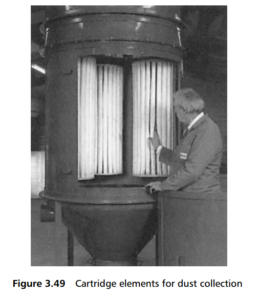0
-
An empty cart
You have no item in your shopping cart
envato-wordpress-toolkit domain was triggered too early. This is usually an indicator for some code in the plugin or theme running too early. Translations should be loaded at the init action or later. Please see Debugging in WordPress for more information. (This message was added in version 6.7.0.) in /var/www/wp-includes/functions.php on line 6121g5plus-darna domain was triggered too early. This is usually an indicator for some code in the plugin or theme running too early. Translations should be loaded at the init action or later. Please see Debugging in WordPress for more information. (This message was added in version 6.7.0.) in /var/www/wp-includes/functions.php on line 6121Several attempts have already been made in this Handbook to classify a type of filter, only for examples to be shown of filter types that cross the filter type classification boundary. The difficulty of precise classification is nowhere so apparent as in the types of filter elements known as cartridges, and therefore with the types of filter termed cartridge filters.
The essential features of a cartridge filter include a cylindrical housing, usually pressurized to handle the pressure in the fluid being filtered (but vacuum operation is not ruled out), in which sits a replaceable filter element, which is the cartridge. This element is also basically cylindrical in shape, and most types are made to a set of standard lengths and diameters, so as to be able to be incorporated in a standard housing. It is most common for the cartridge filter to be set up as a unit with one housing containing one cartridge, but where continuity of fluid flow is essential, then a duplex system is used with two cartridge filters in parallel, piped so that one unit is in use while the other is off-line being cleaned, whereupon the flow is
switched to the now cleaned unit, and the other is taken off-line.
The cartridge filter is used almost entirely for clarification, the cleaning of a fluid from contamination, and the fluid is most often a liquid, with contaminant levels of less than 0.01% by weight (i.e. less than 100ppm). However, some baghouses for
solids recovery from gases now use cartridges as their filter elements. A dust filter with large diameter pleated cartridges is shown in Figure 3.49.
Cartridges are available in a very wide range of types, and in almost every type of filter medium. However they can be broadly classed into two types, according to their construction, which can easily be distinguished, although even here there
are formats that bridge this classification. The first uses an integral piece of porous

filter medium, made or formed into the required cylindrical shape, while the second is made of sets of components that are not necessarily porous but become so when assembled together, with a porosity dictated by the nature of the components (rings, discs, ribbons, etc.) and by the tightness with which they are held together.
It should, of course, be noted that this definition of a cartridge filter could include several other types of filter element that have been described under other classes of filter:
●the basket strainers described in Section 3B
● the filter bags described in Section 3K
● the filter candles also described in Section 3K
● most of the automatically operating (self-cleaning) filters of Section 3M use cartridges as their filter elements
● and even some of the membrane modules described in Section 3S can be considered as cartridges.
Equally, there are one or two types of replaceable element filter that do not fit the precise definition of a cartridge filter given above, yet are included here because of their similarity of function. These are the capsule filters, much used in laboratories
and small-scale production processes such as are involved in the pharmaceutical and life science sectors, and the polymer melt filters, employed to ensure the freedom from blockage of extrusion nozzles for polymer fibres and filaments.
Cartridges are made to work by surface or depth filtration, the choice between which is dependent on a number of factors. Filtration performance can range from 0.5 mm down to 0.1um or even less where membranes are used for the filter medium.
For a long time, surface filters have been graded according to an absolute rating, and depth filters according to a nominal rating and various levels of filtration efficiency. This, however, is changing with the introduction of absolute-rated depth filter media.
There is no universally accepted system for determining the removal ratings of cartridge filters in liquid service. The filter rating method known as the OSUF-Z test developed (at Oklahoma State University) for use with lubricating and hydraulic
liquids has received wide acceptance, and has been adapted by some manufacturers for use with water. Nominal filtration is typically described in percentage terms as between 80 and 90% efficient at some specific particle size. The absolute rating can mean anything between 98 and 99.99% efficiency, or higher. Test methods and standards for filter media are described in detail in Handbook of Filter Media (Derek B. Purchas and Ken Sutherland, 2002, Elsevier Advanced Technology, 2nd Edn).
Ask for more information, please click here.